Tactical athlete training is a specialized program designed to enhance physical and mental resilience for military, law enforcement, and first responders. It focuses on building strength, endurance, agility, and strategic skills to perform under stress. The program integrates advanced methodologies, including stress inoculation training (SIT), to prepare individuals for real-world challenges. By combining physical conditioning with mental toughness, tactical training ensures operational readiness and peak performance in high-stakes environments.
1.1 Definition of a Tactical Athlete
A tactical athlete refers to individuals, such as military personnel, law enforcement officers, and first responders, who require a unique combination of physical, mental, and tactical skills to perform in high-stress environments. These individuals must possess the strength, endurance, agility, and strategic thinking necessary to execute complex operations effectively. Tactical athletes are distinguished by their ability to operate in unpredictable scenarios, making quick decisions while maintaining peak physical and mental performance. Their training is tailored to enhance operational readiness, ensuring they can adapt to diverse challenges and threats. This definition emphasizes the blend of athleticism and tactical expertise required for their roles.
1.2 Importance of Tactical Training in Modern Warfare
Tactical training is crucial in modern warfare due to the increasing complexity and unpredictability of combat scenarios. It equips military personnel with the skills needed to navigate diverse terrains, utilize advanced weaponry, and adapt to evolving threats. Such training enhances situational awareness, decision-making under pressure, and teamwork, which are vital for mission success. Additionally, it prepares soldiers for asymmetric warfare, where enemies may employ unconventional tactics; By fostering physical and mental resilience, tactical training ensures that soldiers can endure prolonged operations and recover swiftly, maintaining operational effectiveness. This makes it a cornerstone of modern military preparedness and strategic advantage.
1.3 Overview of the Training Program
The tactical athlete training program is a comprehensive, structured approach designed to enhance physical and mental capabilities for operational success. It integrates strength, endurance, agility, and resilience training, tailored to meet the demands of modern warfare. The program is divided into phases, starting with foundational conditioning and progressing to mission-specific skills. Emphasizing periodization, it balances intense training with recovery to optimize performance and prevent injury. Mental toughness is cultivated through stress inoculation and mindfulness exercises, ensuring adaptability under pressure. Each phase builds on the previous, ensuring a progressive and adaptive development of skills. This holistic approach prepares tactical athletes to excel in diverse and challenging environments.
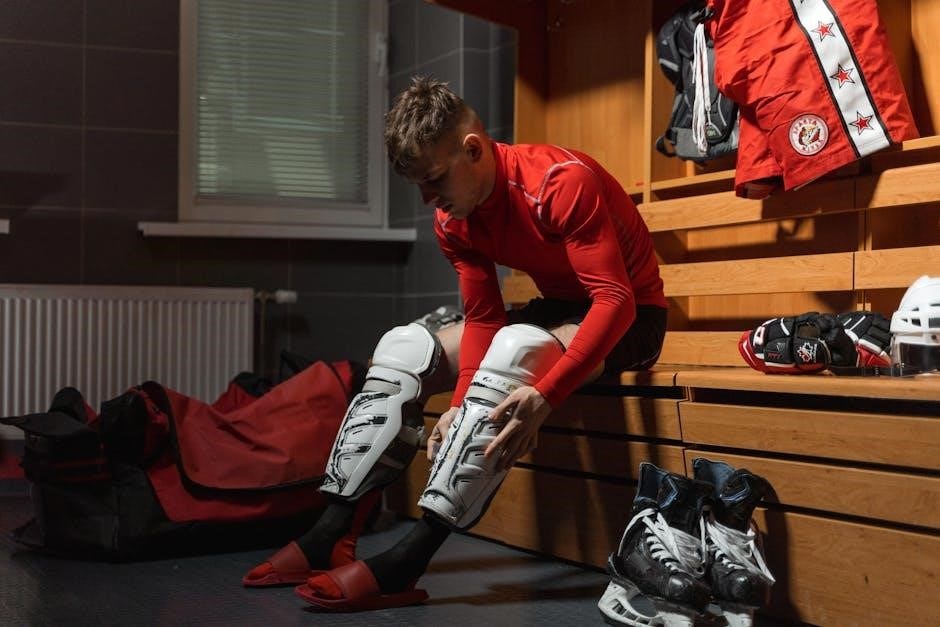
Evolution of Tactical Athlete Training Programs
Tactical athlete training has evolved from traditional military drills to modern, science-backed programs. Advances in technology and methodology have enhanced efficiency, focusing on adaptability and real-world application.
2.1 Historical Development of Tactical Training
Historically, tactical training originated in military contexts, focusing on basic drills and physical conditioning. Early programs emphasized endurance and strength through repetitive exercises. Over time, the approach evolved to include skill-specific training, such as weapon handling and combat tactics. The integration of psychological preparation and team coordination marked a significant shift. Modern advancements in sports science and technology have further refined these methods, creating comprehensive programs tailored to enhance performance under stress. This evolution reflects the growing understanding of human capabilities and the need for adaptable, resilient operatives in dynamic environments. Tactical training now combines physical and mental disciplines for optimal effectiveness.
2.2 Modern Advances in Tactical Training Methodology
Modern tactical training incorporates cutting-edge methodologies, blending sports science with military expertise. Advanced technologies like wearable devices and AI-driven analytics monitor performance, enabling personalized training plans. Virtual reality simulators enhance realistic scenario training, improving decision-making under stress. Periodization and progressive overload principles optimize physical development, while recovery techniques such as cryotherapy and nutrition planning prevent overtraining. Additionally, mental resilience is bolstered through mindfulness and stress inoculation training (SIT). These innovations ensure tactical athletes achieve peak performance, adaptability, and sustainability in demanding environments. The integration of interdisciplinary approaches has revolutionized tactical training, making it more efficient and effective than ever before. This evolution ensures operatives are better prepared for modern challenges.
2.3 Role of Technology in Enhancing Tactical Training
Technology has revolutionized tactical training by providing innovative tools to enhance performance and readiness. AI-powered platforms now offer personalized training plans, optimizing workouts based on individual needs and progress. Virtual reality (VR) and augmented reality (AR) simulate real-world scenarios, allowing tactical athletes to practice decision-making and strategic skills in immersive environments. Wearable devices track physical metrics like heart rate and movement patterns, enabling precise monitoring and reducing injury risks. Data analytics provide insights to refine training programs, ensuring maximum efficiency. Additionally, advancements in simulation technology enhance combat and tactical movement drills, preparing operatives for diverse operational challenges. These technological integrations ensure modern tactical training is more adaptive, effective, and precise than ever before.
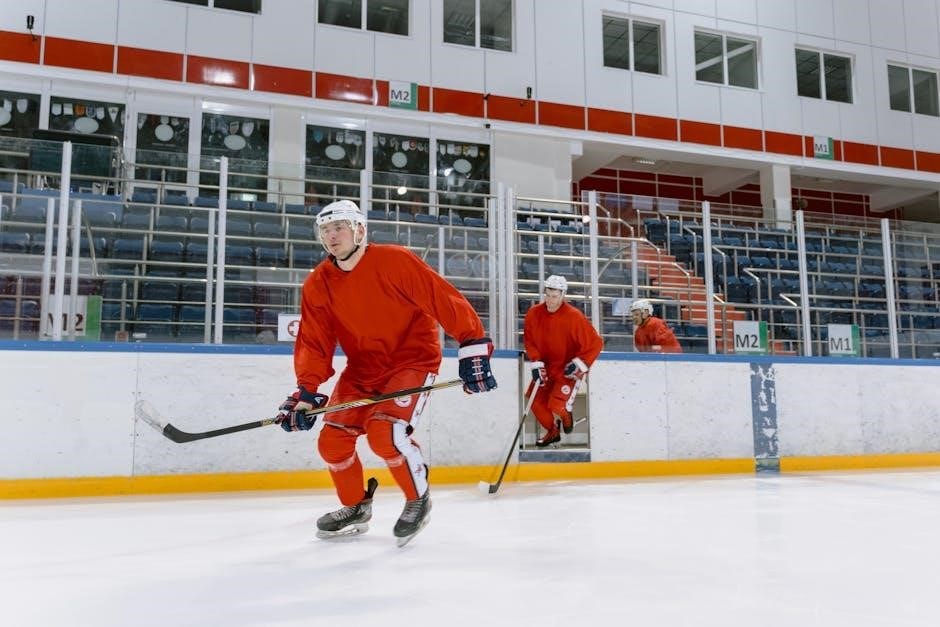
Core Components of a Tactical Athlete Training Program
A tactical athlete training program focuses on strength, endurance, agility, and mental resilience, ensuring operatives are physically and mentally prepared for demanding missions and scenarios.
3.1 Strength and Power Development
Strength and power development are foundational to tactical athlete training, enabling individuals to perform tasks requiring force and speed. This component focuses on building muscular strength through resistance exercises, such as weightlifting and bodyweight training. Power development involves explosive movements like plyometrics and kettlebell swings, enhancing the ability to generate force quickly. Progressive overload is a key principle, gradually increasing intensity to avoid plateaus. Proper technique is emphasized to maximize gains and prevent injury. The goal is to enhance functional strength, directly applicable to real-world scenarios, ensuring tactical athletes can meet the physical demands of their roles effectively and safely.
3.2 Endurance and Stamina Building
Endurance and stamina are critical for tactical athletes, enabling prolonged physical effort in demanding environments. Training focuses on cardiovascular exercises, such as running, swimming, and interval training, to enhance aerobic capacity. High-intensity interval training (HIIT) is often used to improve both endurance and anaerobic performance. Long-duration activities, like rucksack marches, simulate real-world scenarios, fostering mental and physical resilience. Proper pacing and progressive overload ensure steady improvements without overtraining. Building stamina allows tactical athletes to sustain operations over extended periods and recover quickly between efforts, making it essential for mission success and operational readiness in challenging and unpredictable situations. This component is vital for enduring physical and mental demands.
3.3 Agility and Speed Training
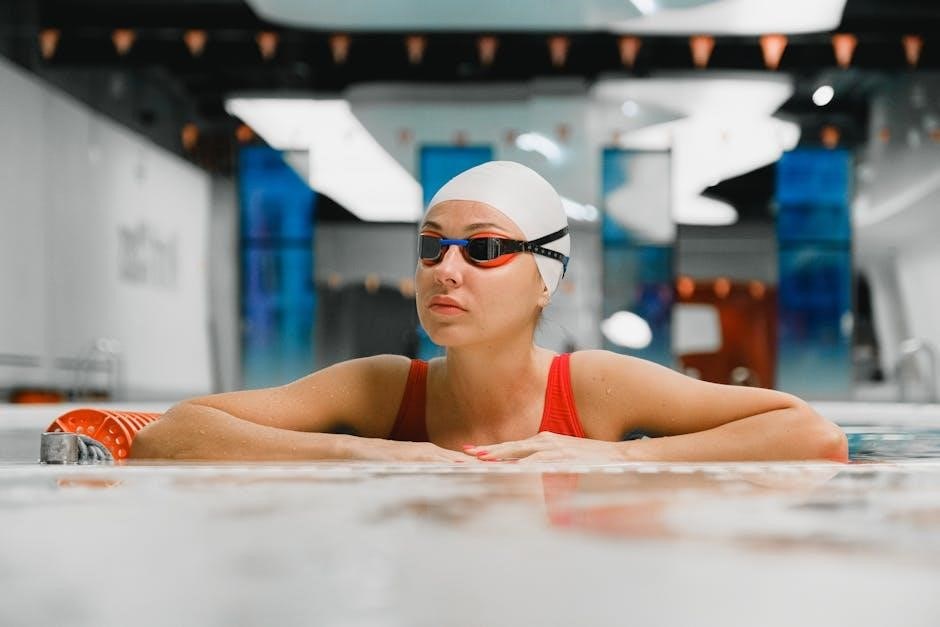
Agility and speed training are essential for tactical athletes, enabling quick and precise movements in dynamic environments. Drills such as cone exercises, ladder drills, and shuttle runs improve agility, while sprinting and plyometrics enhance speed. These exercises mimic real-world scenarios, like navigating obstacles or chasing targets. Reaction training with unpredictable stimuli sharpens decision-making and rapid response capabilities. Incorporating resistance bands and weighted vests increases intensity. The goal is to optimize acceleration, deceleration, and directional changes, ensuring tactical athletes can outmaneuver adversaries. This training not only enhances physical performance but also boosts confidence and situational awareness, crucial for operational effectiveness in high-stakes missions and unpredictable terrains. Regular progression ensures continuous improvement.
3.4 Mobility and Flexibility Exercises
Mobility and flexibility are critical for tactical athletes to maintain optimal movement and reduce injury risk; Exercises like dynamic stretching, yoga, and joint mobilization improve range of motion and muscle elasticity. These practices enhance positional shooting, gear management, and overall operational efficiency. Incorporating foam rolling and self-myofascial release helps reduce muscle tension and promotes recovery. Tactical athletes often engage in movement screens to identify limitations and address them proactively. Regular flexibility training ensures fluid transitions between positions, such as prone to standing, and supports endurance during prolonged missions. By prioritizing mobility, athletes maintain peak performance and readiness in dynamic, high-stress environments. Consistency is key to long-term success.
3.5 Mental Toughness and Resilience Training
Mental toughness and resilience are cornerstone traits for tactical athletes, enabling them to perform under extreme stress and adapt to unpredictable scenarios. Techniques like stress inoculation training (SIT) expose athletes to controlled stressors, fostering psychological hardiness. Mindfulness practices enhance focus and emotional regulation, while scenario-based simulations build confidence and decision-making skills. These methods cultivate a mindset that embraces challenges as opportunities for growth. By integrating mental resilience training, athletes develop the psychological stamina to recover from setbacks and maintain mission focus. Such programs ensure tactical athletes can thrive in high-pressure environments, delivering peak performance when it matters most. Resilience is as vital as physical strength.
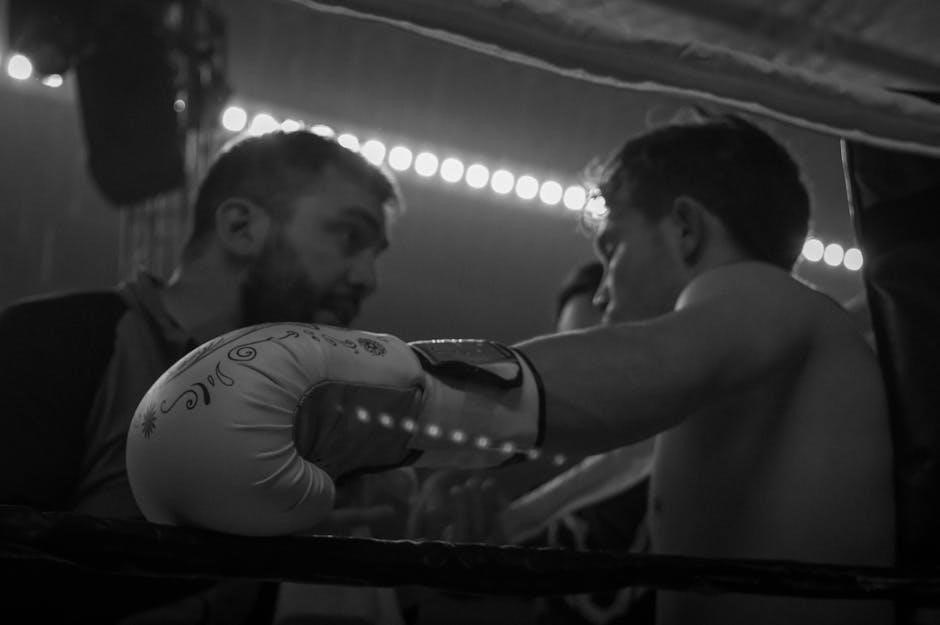
Skill Development in Tactical Athlete Training
Skill development in tactical athlete training focuses on enhancing combat skills, tactical movement, and teamwork. Essential for real-world operations, these abilities ensure mission success through effective communication and strategy execution.
4.1 Combat Skills and Weapon Handling
Combat skills and weapon handling are critical components of tactical athlete training, ensuring proficiency in firearms, hand-to-hand combat, and tactical maneuvers. These skills are honed through repetitive drills, simulations, and stress inoculation training (SIT) to enhance decision-making under pressure. Training programs emphasize safety, accuracy, and efficiency, adapting to real-world scenarios. Weapon handling includes proper maintenance, reloading techniques, and marksmanship, while combat skills focus on situational awareness and strategic engagement. This comprehensive approach ensures tactical athletes can operate effectively in high-stakes environments, integrating physical and mental readiness for mission success. Continuous practice and scenario-based training reinforce these essential competencies.
4.2 Tactical Movement and Navigation
Tactical movement and navigation are essential skills for tactical athletes, ensuring they can operate effectively in various environments. Training focuses on techniques like cover and concealment, flanking, and buddy team movement to enhance battlefield survivability. Navigation skills, including map reading, compass use, and GPS navigation, are honed to ensure precise movement in unfamiliar territories. These skills are often practiced under stress to simulate real-world scenarios, improving decision-making and situational awareness. Tactical athletes learn to adapt their movement strategies based on terrain, enemy positioning, and mission objectives, ensuring seamless execution in high-stakes situations. This training is critical for operational success and team coordination.
4.3 Teamwork and Communication Strategies
Teamwork and communication are vital components of tactical athlete training, ensuring seamless coordination during missions. Training emphasizes clear and concise communication, situational awareness, and adaptability. Tactical athletes learn to work cohesively, assigning roles based on strengths and expertise. Drills focus on decision-making under pressure, ensuring rapid, effective communication to maintain operational flow. Strategies include pre-mission briefings, real-time updates, and post-action reviews to refine teamwork; These practices foster trust, accountability, and unity, enabling teams to overcome challenges and achieve objectives efficiently. Effective communication and collaboration are cornerstone skills, critical for success in high-stakes environments.
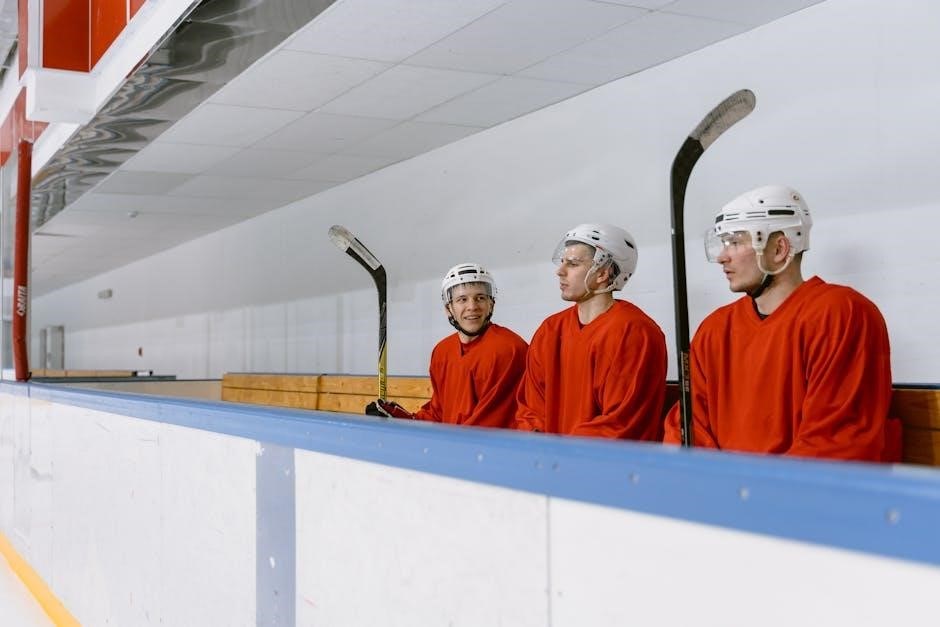
Periodization and Progression in Training
Periodization structures training into specific cycles, ensuring progressive overload and recovery. It balances intensity, volume, and rest to enhance performance while minimizing overtraining risks and sustaining long-term growth.
5.1 Understanding Training Cycles
Training cycles are structured periods within a tactical athlete program, each focusing on specific goals like building strength, enhancing endurance, or improving agility. These cycles, typically lasting weeks or months, allow for progressive overload and adaptation. They are designed to peak performance for critical missions or operations. Each cycle incorporates rest and recovery phases to prevent overtraining and injury, ensuring sustained progress. Understanding these cycles is crucial for optimizing physical and mental readiness, aligning training with operational demands, and achieving peak performance when it matters most. Proper planning of these cycles ensures a balanced and effective approach to tactical training.
5.2 Progressive Overload in Tactical Training
Progressive overload is a cornerstone of tactical training, involving gradual increases in intensity or volume to drive continuous improvement. This method ensures athletes build strength, power, and endurance over time. By incrementally challenging the body, it adapts to higher demands, preparing for the physical and mental rigors of tactical operations. Techniques include adding weight, increasing repetitions, or reducing rest periods. Consistent application of progressive overload prevents plateaus and enhances functional capabilities, ensuring tactical athletes remain operationally ready. It is tailored to individual limits, fostering resilience and peak performance in high-stress environments. This approach is vital for maintaining a competitive edge in modern warfare.
5.3 Maintenance and Recovery Phases
Maintenance and recovery are critical phases in tactical athlete training, ensuring sustained performance and preventing overtraining. These phases focus on preserving strength, endurance, and skill levels while allowing the body to heal. Active recovery techniques, such as light cardio, stretching, and mobility exercises, are employed to promote blood flow and reduce muscle soreness. Adequate sleep, nutrition, and stress management are also prioritized to support physiological and mental restoration. Periodic deload weeks are often incorporated to give athletes time to recover fully. This balanced approach ensures tactical athletes remain operationally ready without compromising long-term performance or increasing injury risk. Recovery is as vital as training itself.
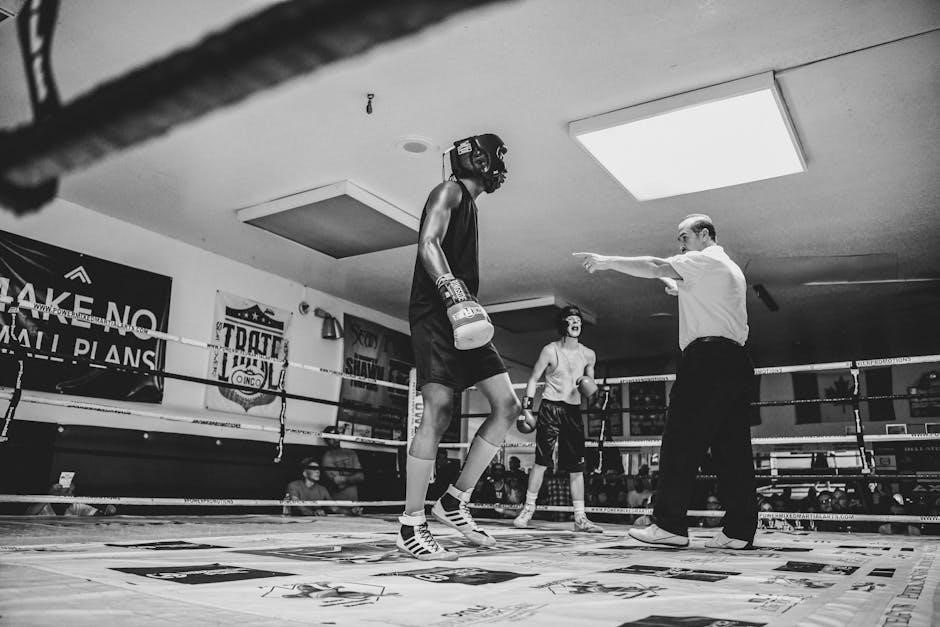
Injury Prevention and Recovery
Injury prevention and recovery are vital for maintaining tactical athletes’ peak performance. Strategies include proper warm-ups, mobility exercises, and nutrition to reduce injury risk and aid healing.
6.1 Common Injuries in Tactical Training
Tactical training often leads to injuries due to its rigorous nature. Common injuries include muscle strains, particularly in the hamstrings and quadriceps, from sprinting and agility drills. Knee injuries frequently occur due to repetitive jumping and rapid direction changes. Shoulders are prone to issues from carrying heavy gear or weapons, while lower back strains arise from lifting or uneven loads. Stress fractures in the feet or shins are also prevalent due to repetitive running or marching. These injuries often result from overuse or repetitive stress, exacerbated by the physical demands of tactical environments. Understanding these injuries is crucial for maintaining operational readiness.
6.2 Recovery Techniques for Tactical Athletes
Recovery is critical for tactical athletes to maintain peak performance and prevent overtraining. Techniques include dynamic stretching to improve flexibility and reduce muscle tension. Foam rolling and self-myofascial release help alleviate muscle soreness. Strength and conditioning exercises, such as low-intensity resistance training, promote muscle repair. Cold-water immersion therapy is widely used to reduce inflammation and enhance recovery. Proper nutrition, focusing on protein and carbohydrates, supports muscle regeneration. Additionally, mindfulness practices like meditation and deep breathing can improve mental resilience. Ensuring adequate sleep is also essential for physical and mental restoration. These techniques collectively help tactical athletes recover efficiently and maintain operational readiness.
6.3 Role of Nutrition in Injury Prevention
Nutrition plays a vital role in injury prevention for tactical athletes by ensuring optimal physical performance and resilience. A balanced diet rich in lean proteins, complex carbohydrates, and healthy fats supports muscle repair and regeneration. Adequate hydration is essential for joint health and physical function. Antioxidants and omega-3 fatty acids help reduce inflammation, lowering the risk of chronic injuries. Proper fueling before and after training enhances recovery and prevents overtraining. Avoiding processed foods and sugary drinks minimizes inflammation and promotes overall well-being. Tailoring nutrition plans to individual needs ensures tactical athletes maintain peak readiness and reduce injury risks during intense training and operations.
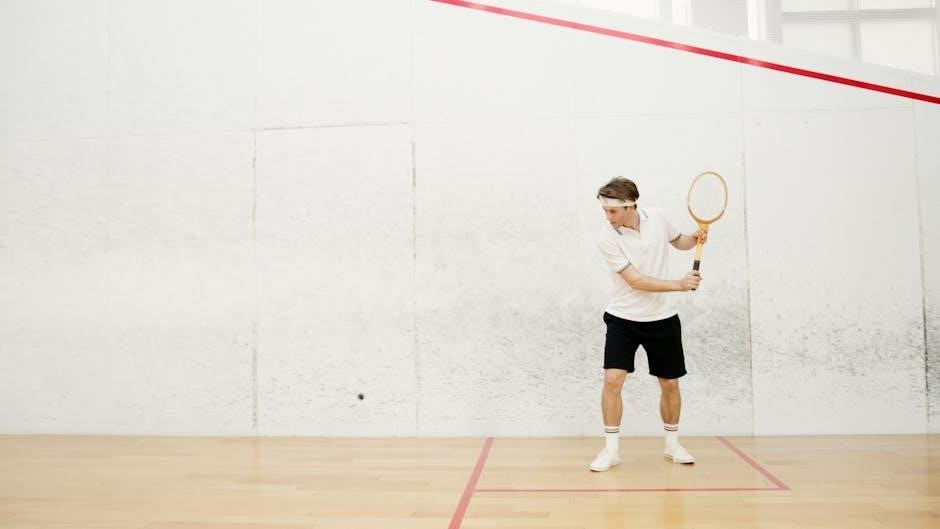
Mental and Emotional Resilience
Mental resilience is crucial for tactical athletes to perform under stress. Techniques like SIT, mindfulness, and mental endurance training enhance focus, emotional stability, and decision-making in high-stakes environments.
7.1 Stress Inoculation Training (SIT)
Stress Inoculation Training (SIT) is a proven methodology to enhance mental resilience. It involves exposing individuals to controlled stressors in a simulated environment, helping them develop coping strategies. This approach builds confidence and improves decision-making under pressure. SIT includes three phases: education, rehearsal, and application. By gradually increasing stress levels, tactical athletes learn to manage anxiety and maintain focus. This training is essential for military and law enforcement personnel, ensuring they perform effectively in high-stakes situations. The goal is to inoculate individuals against stress, enabling them to operate cohesively and make sound judgments during critical operations. This fosters mental toughness and adaptability.
7.2 Mindfulness and Focus Exercises
Mindfulness and focus exercises are integral to tactical athlete training, fostering mental clarity and concentration. Techniques such as meditation, controlled breathing, and visualization help athletes stay present and composed under pressure. These practices enhance situational awareness, allowing individuals to make swift, accurate decisions in high-stress environments. Regular mindfulness training reduces mental fatigue and improves emotional regulation, ensuring peak performance. Tactical athletes learn to channel their energy effectively, maintaining focus on objectives while navigating chaos. Such exercises are tailored to build resilience and cognitive agility, enabling individuals to operate at their best in demanding situations. This mental discipline is vital for mission success and overall well-being.
7.3 Building Mental Endurance
Building mental endurance is critical for tactical athletes to withstand prolonged stress and maintain performance. Techniques like stress inoculation training (SIT) expose individuals to controlled stressors, enhancing resilience. Cognitive training and scenario simulations further refine focus and decision-making under pressure. These methods help athletes develop a mindset that thrives in chaos, ensuring they remain composed and effective. Mental endurance is cultivated through consistent practice, enabling tactical athletes to recover quickly from setbacks and sustain peak performance over time. This mental fortitude is essential for overcoming the physical and emotional demands of tactical operations, making it a cornerstone of modern training programs.

Tactical Athlete Training Program Implementation
Implementation involves assessing individual needs, creating personalized plans, and monitoring progress. Advanced training methodologies ensure effectiveness, while adaptive strategies maintain safety and optimal performance.
8.1 Assessing Individual Needs and Goals
Assessing individual needs and goals is the foundation of a tactical athlete training program. This process begins with an initial fitness assessment, including strength, endurance, and agility tests. Medical history and injury status are also evaluated to ensure safety. Goals are set based on the athlete’s role, operational requirements, and personal aspirations. Performance benchmarks are established to track progress. Understanding the athlete’s unique needs allows for a tailored approach, ensuring the training program addresses specific weaknesses and enhances strengths. This step is crucial for creating a personalized plan that aligns with the individual’s mission and career objectives, fostering optimal performance and readiness.
8.2 Creating a Personalized Training Plan
Creating a personalized training plan involves tailoring the program to meet the tactical athlete’s specific needs, mission requirements, and fitness levels. The plan begins with defining clear, measurable objectives based on the individual’s role and operational demands. Training phases are structured using periodization, alternating between intensity and recovery to optimize performance. The program integrates strength, endurance, agility, and skill development, ensuring a balanced approach. Nutrition and recovery strategies are also incorporated to support physical and mental resilience. Regular reviews and adjustments ensure the plan remains relevant and effective, helping the athlete achieve peak readiness for their specific mission or role.
8.3 Monitoring Progress and Adjustments
Monitoring progress is crucial to ensure the tactical athlete training program remains effective and aligned with the individual’s goals. Regular assessments include performance metrics, fitness tests, and skill evaluations, providing insights into strengths and areas needing improvement. Coaches and trainers use this data to adjust training intensity, volume, and focus, ensuring continuous development. Adjustments may involve modifying workout routines, incorporating new techniques, or addressing emerging challenges. Open communication between the athlete and trainers is key to fine-tuning the program, maintaining motivation, and achieving optimal results. This dynamic approach ensures the training evolves with the athlete’s needs, fostering long-term success and readiness.
Tactical athlete training programs are essential for enhancing performance, resilience, and operational readiness. By integrating physical and mental conditioning, these programs prepare individuals for real-world challenges effectively.
9.1 Summary of Key Takeaways
Tactical athlete training programs are designed to enhance physical and mental resilience, ensuring peak performance in high-stress environments. Key components include strength, endurance, agility, and mental toughness. Periodization and recovery phases are crucial for sustainable progress. Nutrition plays a vital role in injury prevention and optimal performance. Modern advancements, such as stress inoculation training (SIT), further enhance readiness. The integration of technology and personalized plans ensures tailored development for each individual. These programs not only improve operational readiness but also foster long-term health and career longevity for tactical athletes. By combining physical and mental conditioning, they prepare individuals to excel in demanding roles effectively.
9.2 Future Directions in Tactical Athlete Training
The future of tactical athlete training lies in integrating advanced technologies and personalized approaches. AI-driven platforms, like AI chatbots, are emerging as tools for customized training plans and real-time feedback. Wearable technology and data analytics will play a larger role in monitoring progress and preventing injuries. There is also a growing emphasis on mental health and resilience, with techniques like mindfulness and stress inoculation training gaining prominence. Virtual reality (VR) simulations could revolutionize scenario-based training, offering immersive preparation for real-world challenges. Additionally, nutrition and recovery strategies may become more individualized, leveraging genetic insights to optimize performance. These innovations aim to create smarter, more adaptable training programs for tactical athletes.
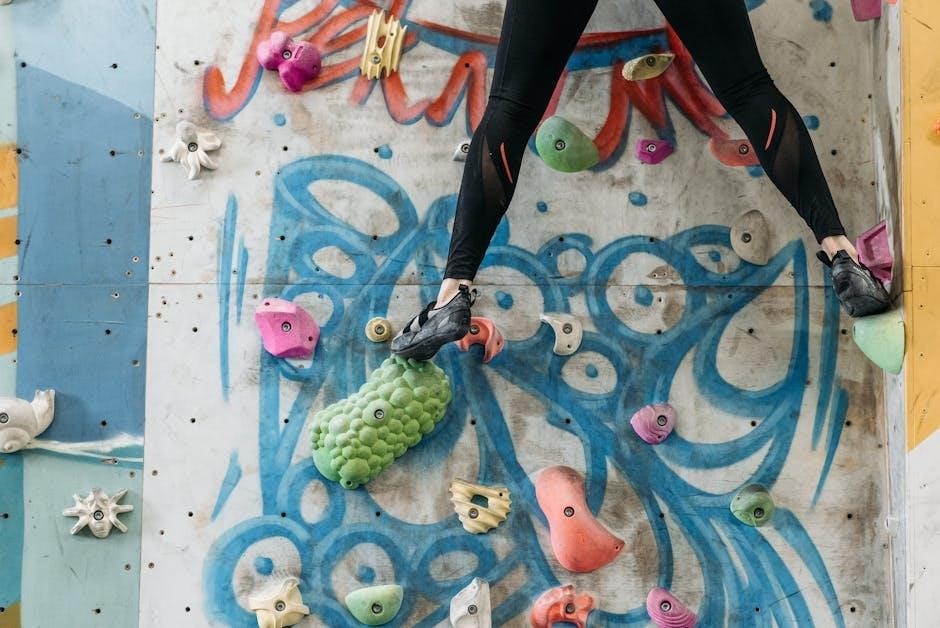
Additional Resources
For further learning, explore PDF guides on tactical training, join online forums for expert insights, and consider enrolling in certification courses to deepen your knowledge.
10.1 Recommended Reading and PDF Guides
For tactical athletes, essential reading includes PDF guides on advanced training methodologies, such as stress inoculation training (SIT) and combat fitness. The Digital Publishing Institute offers accessible resources on enhancing performance under stress. Additionally, Speaking and Writing, K-12 by the National Council of Teachers provides strategies for effective communication, beneficial for team coordination. ResearchGate and Google Scholar host comprehensive reviews on AI applications and tactical fitness. These resources are invaluable for understanding the intersection of physical conditioning, mental resilience, and operational readiness. They provide practical insights for optimizing training programs and achieving peak performance.
10.2 Online Communities and Forums
Online communities and forums provide valuable resources and support for tactical athletes. Platforms like Reddit (e.g., r/tacticaltraining) and Facebook groups dedicated to tactical fitness offer insights, training tips, and shared experiences. Specialized forums such as Military.com and Law Enforcement Forums cater to specific professions, sharing best practices and real-world applications. Additionally, niche communities like TacticalGear.com and Professional Soldiers focus on gear reviews and advanced training methodologies. These platforms foster collaboration, allowing tactical athletes to connect, learn, and refine their skills. Engaging with these communities can enhance training outcomes and provide access to expert advice. They serve as vital networking hubs for professionals seeking continuous improvement.
10.3 Professional Certifications and Courses
Professional certifications and courses are essential for tactical athletes seeking specialized knowledge. The National Strength and Conditioning Association (NSCA) offers the Tactical Strength and Conditioning Facilitator (TSAC-F) certification, tailored for military and first responders. Other programs, like the Stress Inoculation Training (SIT) certification, focus on mental resilience under pressure. Platforms such as Coursera and Udemy provide accessible courses on tactical fitness and operational readiness. These programs enhance skill sets, ensuring tactical athletes are prepared for real-world challenges. They are designed to meet the unique demands of military, law enforcement, and emergency response professionals. Certifications and courses are vital for career advancement and operational excellence.

